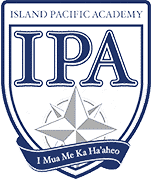Resources and Articles
Safe Technology and Media
In our ever-changing world of technology, social media and technology use is becoming a bigger and bigger part of our children’s world.
Common Sense Media is a wonderful resource that provides education and advocacy to families to promote safe technology and media for children.
The website provides unbiased information, trusted advice, and innovative tools to help parents use the power of media and technology as a positive force in all kids’ lives.

Why Project-Based Learning (PBL)?
Project-based learning (PBL) is a way of working together so that students learn to take responsibility of their own learning.
The video below demonstrates the outcome of PBL with our Grade 5 students as they learned about the American Revolution. The students addressed the driving question for this unit: “How do we as artists connect our community with the people and events of the American Revolution?”
Using different forms of art – visual, digital, performance, music – the students explored the history, events, and experiences of that time in American history. As the culmination of their American Revolution PBL, the students created a living, interactive museum, The American Revolution Museum Experience: Stories and Secrets of the War, for the public, which showcased the innovative learning happening at IPA.
What is Backward Design?
I was reading an interesting article this week about Backward Design Approach which is basically Design Thinking – “If given a task, how do I get there?”
It was so interesting to really think about why we (teachers) give assessments at the end of the unit once teaching has been completed or we sometimes rely on tests from the textbooks.
Backward Design requires teachers to think about what would we accept as evidence that the students have attained the desired understandings or proficiencies. This way of thinking can help teachers to clarify goals and learning targets before teaching begins.
The Backward Design Process has basically 3 parts:
- Identify Desired Results (What should students know, understand, be able to do?)
- Determine Acceptable Evidence (How do we know if students achieved the results?)
- Plan Learning Experiences and Instruction
I like visiting classrooms and learning more about the Units of Inquiry here at IPA, and I believe that a Backward Design Approach works hand-in-hand with project-based learning. The key for success is to know that student knowledge and student understanding is critical to implementing a Backward Design Approach. Just because a student can memorize facts for a test does not mean he/she understands what they mean. Developing instruction that targets such level of understanding requires thoughtful planning and the Backward Design Process can serve as a useful guide.


